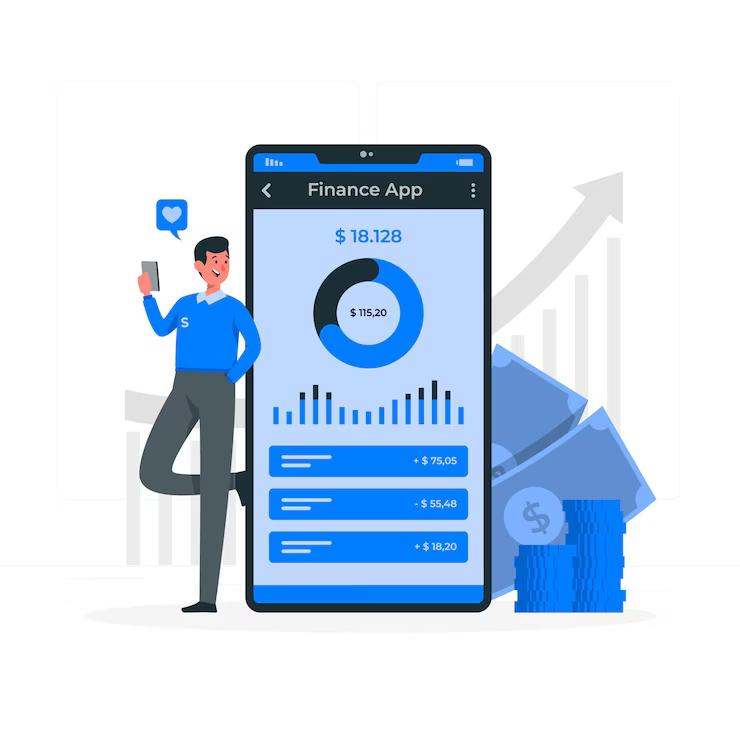Starting a side hustle can help you earn more money on top of your full-time job. You can use extra cash to pay bills, save for goals, or build a safety net. But you need a plan to keep your side work steady. Here we explain how side hustles supplement a 9-5 income sustainably. We share simple tips you can use today.
Why You Need a Side Hustle
A side hustle can give you more cash each month. And it can help you learn new skills. If you lose your main job, you have another source of money. Also, extra income can cut stress. You do not rely on one pay check. Finally, a side gig can turn into a full time job if you grow it right.
Types of Side Hustles That Work

Source:freepik
You can pick a side gig that fits your time and skills. Here are some ideas:
1. Online Tasks and Services
You can sell your skills online. For example, you write articles, design logos, or manage social media. You set your own hours. You work from home. You find clients on websites like Fiverr or Upwork. Then you build a profile. Next, you get reviews. Over time you charge more. You keep your side work steady.
2. Local Gigs and Odd Jobs
You can help neighbors or local shops. You walk dogs, mow lawns, or clean homes. You can also tutor students in math or reading. You meet people in your area. You build trust by doing good work. Then you get more clients by word of mouth. You keep your schedule flexible. You earn extra cash on weekends or evenings.
3. Selling Items You Make or Find
You can craft jewelry, art, or home decor. Then you sell on Etsy or at craft fairs. Or you flip items you buy cheaply. You find bargains at thrift shops or garage sales. You fix them up. Then you sell at a profit online or in person. You set prices that cover your costs and time. You track what sells best. Then you focus on those items.
4. Teaching and Coaching
You can teach a language, music, or a hobby you love. You hold classes online or in a local community center. You set your rates per hour. You plan lessons that help your students learn. You ask for feedback. Then you improve your sessions. You earn more by running group classes or selling guides.
How to Keep Your Side Hustle Steady
You need a clear plan. You can follow these steps to make your extra work last.
1. Set Clear Goals
First, decide how much extra money you need. You write down a monthly target. For example, you aim for $500 each month. Then you break it into weekly goals. You know how many tasks or sales you need. You track your progress. You adjust if you fall behind.
2. Make a Simple Schedule
You work on your side hustle at set times. For example, you pick two weeknights and one weekend day. You block those hours in your calendar. You treat them like a real job. You stick to your plan. You avoid overworking. You also rest. You balance your main job, side work, and life.
3. Track Your Income and Costs
You keep a list of all money in and out. You note what you earn each week. You record what you spend on supplies or fees. Then you check your net profit. You know if your side gig makes sense. You cut tasks that lose money. You focus on what pays best.
4. Build Good Habits
You set aside time for learning and marketing. You spend 30 minutes each week to learn a new skill. You also spend 30 minutes to post on social media or update your profile. You keep a list of potential clients. You reach out to them regularly. You ask happy customers to refer you.
Managing Your Time Well
Time is your main asset. You can use these tips to make every hour count.
l Use Time Blocks
You split your day into blocks. You assign each block a task. For example, 6 to 7 pm you reply to emails. Then 7 to 8 pm you work on orders. You avoid multitasking. You focus on one block at a time. You finish tasks faster. And you feel less stress.
l Avoid Burnout
You take short breaks. You step away from your desk. You stretch or walk. You clear your mind. You also set a stop time. You end side work by 9 pm. Then you rest. You need energy for your main job. And for your health.
l Use Tools to Stay Organized
You use a simple app or a paper planner. You list tasks each day. You mark them done when you finish. You see what still needs work. You set reminders for deadlines. You keep all info in one place. You waste less time.
Final Thoughts
Side hustles supplement a 9-5 income sustainably when you plan and act. You set clear goals. You make time blocks. You track your money. You use good habits. You avoid common mistakes. Over time you grow your extra income. You build skills and financial security. And you feel more in control of your money and your life.












